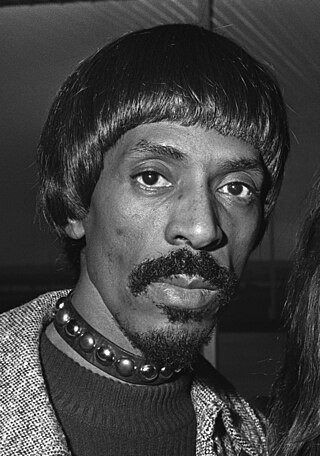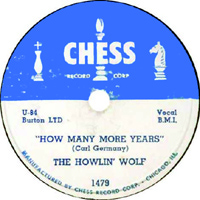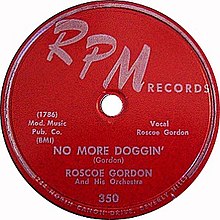Rhythm and blues, frequently abbreviated as R&B or R'n'B, is a genre of popular music that originated in African-American communities in the 1940s. The term was originally used by record companies to describe recordings marketed predominantly to urban African Americans, at a time when "urbane, rocking, jazz based music ... [with a] heavy, insistent beat" was becoming more popular. In the commercial rhythm and blues music typical of the 1950s through the 1970s, the bands usually consisted of a piano, one or two guitars, bass, drums, one or more saxophones, and sometimes background vocalists. R&B lyrical themes often encapsulate the African-American experience of pain and the quest for freedom and joy, as well as triumphs and failures in terms of relationships, economics, and aspirations.
Ska is a music genre that originated in Jamaica in the late 1950s and was the precursor to rocksteady and reggae. It combined elements of Caribbean mento and calypso with American jazz and rhythm and blues. Ska is characterized by a walking bass line accented with rhythms on the off beat. It was developed in Jamaica in the 1960s when Stranger Cole, Prince Buster, Clement "Coxsone" Dodd, and Duke Reid formed sound systems to play American rhythm and blues and then began recording their own songs. In the early 1960s, ska was the dominant music genre of Jamaica and was popular with British mods and with many skinheads.

Izear Luster "Ike" Turner Jr. was an American musician, bandleader, songwriter, record producer, and talent scout. An early pioneer of 1950s rock and roll, he is best known for his work in the 1960s and 1970s with his then-wife Tina Turner as the leader of the Ike & Tina Turner Revue.

Robert Calvin Bland, known professionally as Bobby "Blue" Bland, was an American blues singer.

Modern Records was an American record company and label formed in 1945 in Los Angeles by the Bihari brothers. Modern's artists included Etta James, Joe Houston, Little Richard, Ike & Tina Turner and John Lee Hooker. The label released some of the most influential blues and R&B records of the 1940s and 1950s.
RPM Records was an American Los Angeles-based record label launched in 1950. This is not the same RPM used by Tony Bennett, nor is it related to labels in the UK and South Africa.

Rosco N. Gordon III, sometimes billed as Roscoe Gordon, was an American blues singer, pianist, and songwriter. He is best known for his hit songs "Booted," (1952), "No More Doggin'" (1952), and "Just a Little Bit" (1960). Gordon was a pioneer of the Memphis blues style. He played piano in a style known as the "Rosco rhythm," with the emphasis on the off-beat. This rhythm was an influence on later musical styles such as Jamaican ska and reggae.

"I've Been Loving You Too Long" (originally "I've Been Loving You Too Long (To Stop Now)") is a soul music ballad written by Otis Redding and Jerry Butler. Considered by music critics and writers to be one of Redding's finest performances and a soul classic, it is a slow, emotional piece with Redding's pleading vocals backed by producer Steve Cropper's arpeggiated guitar parts and a horn section.
Theophilus Beckford was a Jamaican pianist and one of the pioneers of Jamaican popular music during the transition from rhythm 'n' blues to Jamaican ska.

"You Know I Love You" is a song written and recorded by B.B. King. Released on RPM Records in 1952, it was King's second No. 1 single on the Billboard R&B chart. King's friend and collaborator Ike Turner played piano on the original recording. The song was included on King's debut album Singin' The Blues in 1957.
The ska stroke up or ska upstroke, skank or bang, is a guitar strumming technique that is used mostly in the performance of ska, rocksteady, and reggae music. It is derived from a form of rhythm and blues arrangement called the shuffle, a popular style in Jamaican blues parties of the 1940s, 1950s and 1960s.

"Just a Little Bit" is an R&B-style blues song recorded by Rosco Gordon in 1959. It was a hit in both the R&B and pop charts. Called "one of the standards of contemporary blues," "Just a Little Bit" has been recorded by various other artists, including Little Milton and Roy Head, who also had record chart successes with the song.

"How Many More Years" is a blues song written and originally recorded by Howlin' Wolf in 1951. Recorded at the Memphis Recording Service – which later became the Sun Studio – it was released by Chess Records and reached No. 4 on the Billboard R&B chart. Musician and record producer T-Bone Burnett has described "How Many More Years" as "in some ways ... the first rock’n’roll song". It was a double-sided hit with "Moanin' at Midnight", which reached No. 10 on the R&B chart.

"Moanin' at Midnight" is a blues song written and recorded by Howlin' Wolf in 1951. The recording was released on Chess Records as his debut single. It charted on Billboard's R&B chart, but the B-side, "How Many More Years," became the popular side of the record.

This article contains information about albums and singles released by of American musician and bandleader Ike Turner.

Ernest Ray Lane was an American blues pianist. He played various blues musicians and bands, including with Pinetop Perkins, Robert Nighthawk, Ike Turner, George "Harmonica" Smith, and Canned Heat. Lane also released singles and album as a solo artist.
Willie Kizart was an American electric blues guitarist best known for being a member of Ike Turner's Kings of Rhythm in the 1950s. Kizart played guitar on "Rocket 88" in 1951, which is considered by some accounts to be the first rock and roll record. The record is noted for featuring one of the first examples of distortion ever recorded; played by Kizart.
Earl Forest was an American musician and a member of the Memphis-based R&B coalition called the Beale Streeters, which included Johnny Ace, Bobby Bland, Junior Parker, B.B. King, and Roscoe Gordon. Forest had a hit record in 1953 with "Whoopin' And Hollerin'" on Duke Records. He also recorded for Meteor Records and Flair Records.
Dennis Binder is an American rhythm and blues musician and singer, best known for his song "Long Man Blues". Binder began his careers in the 1950s, recording for prominent R&B labels, including Chess Records, Sun Records, and Modern Records. He was also recorded with Ike Turner's Kings of Rhythm.
The Beale Streeters were a Memphis-based R&B coalition of musicians, which at times included John Alexander, Bobby Bland, Junior Parker, B.B. King, Earl Forest, Willie Nix, and Rosco Gordon. Initially, they were not a formal band, but they played at the same venues and backed each other during recording sessions.











